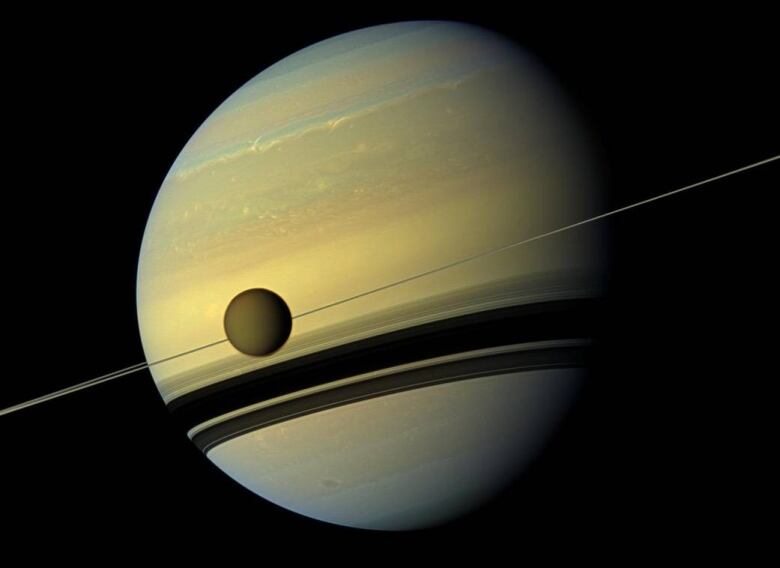How an Islander hopes to help find life on a Saturn moon
Water vapour testing could reveal signs of life on Enceladus

A Prince Edward Islander has embarked on a mission to find life on one of Saturn's icymoons.
Peter Willis left his workon NASA'sPerseverance rover, which landed on Mars two years ago,to supervise thechemical analysis and life detection group at the space agency's Jet Propulsion Labin Pasadena, Calif.
The group is testing water vapour plumes on Enceladus,where Willisbelieves life could be detected.
"The entire scientific community is determined:This is the target, this is where we want to go," he said.
Scientistsonce thought Enceladuswas unremarkable and that there was nothing particularly unusual about the satellite, Willis said.
This is the sort of unanticipated discovery that scientists live for.- Peter Willis
That changed when the Cassini spacecraft started flying closer to the moon in 2005, detecting organic chemicals on jets of water being sprayed out into space.
"I think it's the most exciting planetary science discovery that's been made in the last decade,"Willis said.
"This is the sort of unanticipated discovery that scientists live for."

Willis has worked at the Jet Propulsion Lab for almost 20 years. He helped get the Mars Perseverance rover ready to collect samples onthe Red Planet.
Now, he's developing instruments to analyze the jets of water on Enceladus.
Willis said the plan is to have a new spacecraft witha "mouth" to collect that water as it flies through the plumes sort of like a whale or a "big electronic bird."
"We're going to melt [the water]and we're going to analyze what's in that water," he said.
"We can use the 'taste' to determine, Does this taste like some completely abiotic rock or does this taste like it has signs of life?"
Testing in progress
The plumes are very diffuse, Willissaid. They collect about one microlitre of water.
For comparison, a typical drop of water contains 25 microlitres.
Willis said he's looking for something in thesamples that could reveal the possibility of life.
"The big target really is amino acids, the building blocks of proteins," he said.

Willis said NASA has not approved the mission yet. The proposal will be submitted next year.
If approved, the launch would be sometime in the 2030s. Willis said the journey to Enceladus would take seven to eight years,and that thetesting itself could take three.
"Best case scenario, we would actually execute these measurements in 2046," he said.
Willis said he hopes he can culminate his career working on the project.
With files from Laura Chapin












_(720p).jpg)


 OFFICIAL HD MUSIC VIDEO.jpg)
.jpg)



























































































